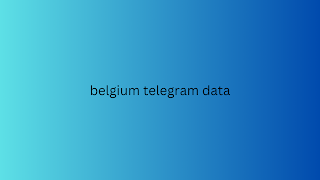3. Adjust the channel
Your customer journey probably already describes very clearly which channels your B2B audience uses to view new content. Normally you might use channels like LinkedIn or a newsletter to share your content. But you should also change this during the summer period.
Also read: Prevent a summer dip: 15 ideas for social media content [infographic]
When your target audience is on vacation, they might choose not to read their email or scroll through LinkedIn. But they might be on other platforms like YouTube, Instagram or Facebook. belgium telegram data That’s why it’s also important not to ignore other channels the rest of the year and still use them, even if they’re not normally your focus. Outside of the summer period, this doesn’t have to be as intensive as your usual channels, but in the summer you can use them more intensively than before and move your content there.
Therefore, make sure that your B2B target group already follows your company on these channels before the summer period starts. For example, refer from one channel to another for the rest of the year. This way you have a better chance of attracting attention during the holiday period. If you cannot reach your target group via the right channels, that is a missed opportunity.

4. Create content for mobile
In 2019, Sanoma conducted a study into media use during the summer holidays . This showed that almost everyone uses the internet during the summer holidays, but the way in which this is done can differ.
It turned out that 92% of people used their smartphone for internet on holiday. In addition, 40% also used their tablet and 21% their laptop.
